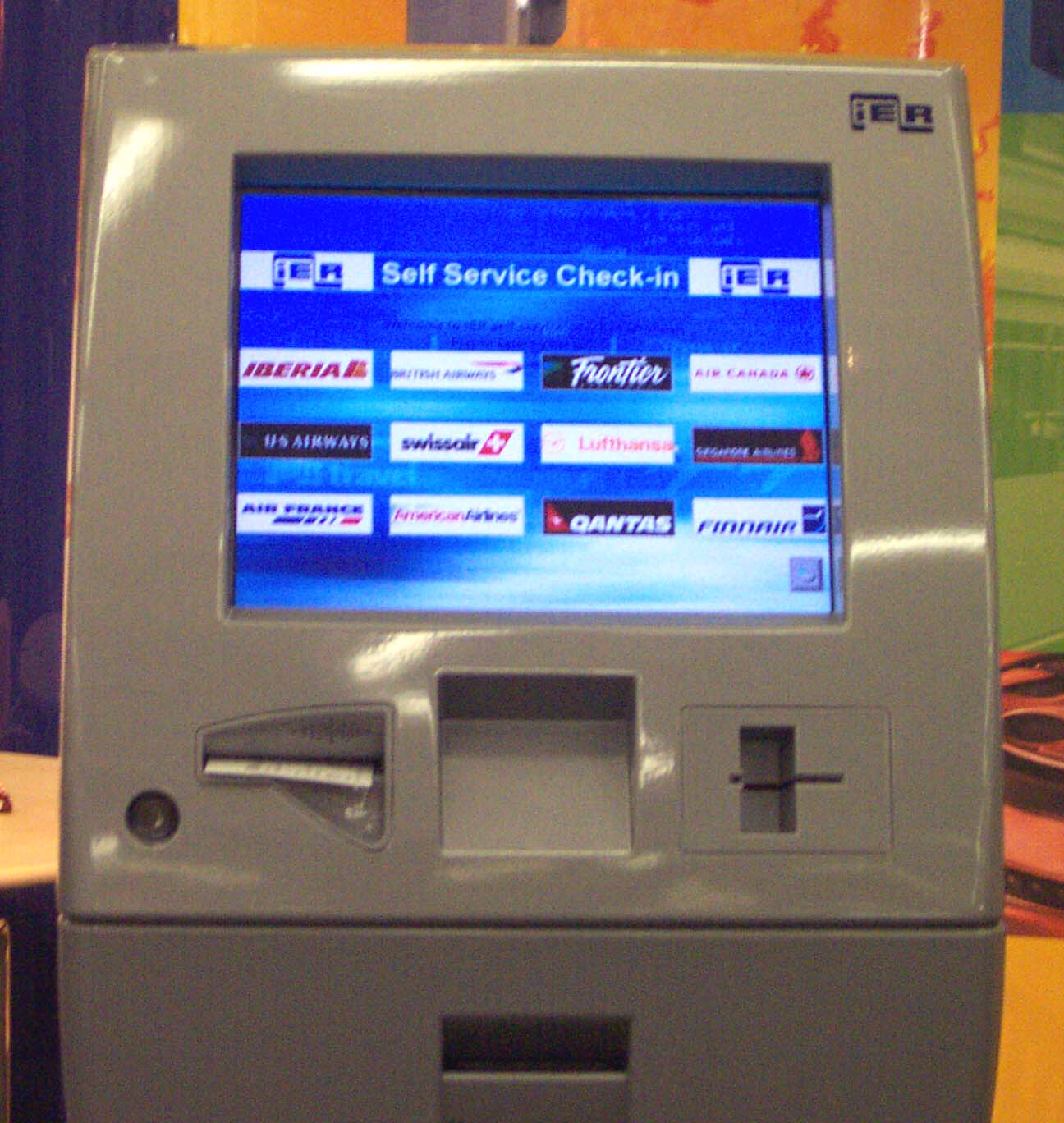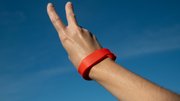Article
Will biometrics take flight?
In the wake of the Sept. 11 terrorist attacks, airports and airlines look to biometrics as a possible enhancement to security and kiosk programs.
February 25, 2002
At the KioskCom Europe trade show on Nov. 6 in London, British Airways senior manager of journey systems Peter Stanton was one of the features speakers. But what he had to say in his presentation and what the conference attendees wanted to ask were two different things.
His presentation focused on the airline's check-in kiosk program and efforts to integrate the program with other airlines. But during a question-and-answer seminar, the roughly 60 attendees present at the seminar peppered him with questions unrelated to airline integration. With American, English, German, and Irish accents blending together in a United Nations-esque stew, the questioning for the most part centered on the Sept. 11 terrorist attacks and how that will affect airline kiosk programs.
As far as the kiosks themselves are concerned, the answer is basic. The Federal Aviation Administration's decision not to ban check-in kiosks made concerns over their immediate future a moot point in the United States and other countries have followed suit.
"The means of delivering a boarding pass aren't necessarily the issue as long as you have an ID that showed that you're you and you have a ticket to fly on the day," said Stanton. "I don't think it's an issue that you get it from a kiosk."
The long-range future, however, is a little cloudier. Biometrics, the science of recognizing physical traits for identification purposes, has been transformed by the events of Sept. 11 from an intrusive technology to a viable security measure at the world's airports.
So while the concept of airport kiosks is not dead, there are questions over how they will look and operate in the future.
The here and now
In the confusion and battering the American psyche took on Sept. 11 and the days afterward, airline kiosk programs - which offer check-in services, boarding passes, and information on upgrades and seat assignments - suffered their own beating.
Air Canada suspended its check-in programs immediately after the attack, with Delta Air Lines following on Sept. 17. The two airlines eventually restored the programs, though Air Canada again shut down the program in late September for a week in order to make some unspecified security upgrades.
Immediately after the attacks, the Federal Aviation Administration (FAA)released new security guidelines, including the elimination of curbside check-in and off-premise baggage check-in services. This led to some confusion over the status of the check-in kiosks, which were never specifically banned.
"One of the main challenges we encountered was in the early days after Sept. 11 there was erroneous information that off-site check-ins were not possible," said Jack Walsh, a spokesman for Alaska Airlines. "That was a problem because a number of our kiosks are at locations near airports, such as parking facilities and rental-car agencies. There was information going out that this was not allowed. But the correct information was that off-facility baggage checkout was not allowed. There were some challenges in letting people know (check-in kiosks) were still allowed."
For an airline like Alaska Airlines, shutting down its kiosk program would be tantamount to inviting chaos. The airline has 286 kiosks in place, Walsh said, and the airline has practically phased out ticketing agents at some airport counters. While Walsh would not estimate how much the airline has invested in the program, he said they were close to irreplaceable.
Selected biometrics companies and their focus Bioscrypt Inc.: Fingerprint recognition |
"Our check-in kiosks are really an integral part of our system," he said. "It's a tremendous program and we've been very pleased with it."
But not everyone is pleased to see check-in kiosks standing where ticket agents once worked. A week after the terrorist attacks, the Association of Flight Attendants, AFL-CIO, criticized the FAA's new security guidelines and called for a stop to check-in kiosks because passengers can check in without being identified by airline staff.
The problem for check-in kiosks is not their function, but their location, said Dr. Rick Charles, who heads the aviation program at Georgia State University.
"Check-in kiosks are probably best secure if they are located in an open area so that users are in plain view of everyone, including security personnel," Charles said. "That depends, of course, on what the application for the particular kiosk is."
Upgrading security
With the debate ongoing concerning the viability of check-in kiosks, the next step would appear to involve biometrics. The technology takes physical traits, including fingerprints or iris scans, and records them in a database. Frequent flyers can be identified at the kiosk using biometrics and sent on their way.
With technologies ranging from fingerprint readers (Identix Inc.) to iris scanners (Data Treasury Corp.) to voice authentication (Nuance Communications Inc.) to facial recognition (Imagis Technologies Inc.), biometrics companies are seeking to create the killer airport applications.
And these companies are beginning to make their presence felt. Oakland International Airport in mid-October said it would install Imagis's facial-recognition technology within six months. San Francisco International Airport plans to use Idenitx fingerprint technology to screen prospective employees. And Logan International Airport in Boston, the originating airport for the two planes that crashed into the World Trade Center towers, disclosed in late October that it would test biometrics systems developed by Viisage Technology Inc. and Visionics Corp.
Biometrics is also having an impact on the world scene. At Ben Gurion International Airport in Tel Aviv, Israel, seven "Express Entry" kiosks utilize biometrics to identify frequent flyers entering and leaving the Middle East nation.
Charles warned, however, that airports and airlines alike should be careful when they integrate biometrics technology. Certain biometrics technologies are already effective, but some require more time to mature.
"Biometrics can be very effective as a deterrent, although not perfect, if they are used with an effective data base," he said. "The best bet currently is fingerprint ID since it is reliable, proven, and can be interfaced with numerous domestic and international data bases already in place. Additional data can be added at the customs and immigration level.
"Retinal scans have good promise, but can be time-consuming and or critical to use effectively, and there are no extensive data bases in existence," he continued. "Facial recognition has good long-term possibilities but the technology is not yet stable or reliable, and, again, there are no data bases of any size."
Airlines and airports
While airports are taking steps to enhance their security measures with biometrics, airlines and other companies are also eyeing the application potential.
British Airways, which operates 210 kiosks, has not developed a plan yet for integrating biometrics, but that time is coming, according to Stanton.
"It has to be part of the process with kiosk-enabling devices," he said. "If we use biometrics, then the kiosks will be able to cope with it. I can't see any limitations."
French-based companies IER and the SAGEM Group have announced plans to develop biometric-based technology together. IER will integrate SAGEM's fingerprint recognition technology into IER's self-service kiosks.
At KioskCom Europe, IER product marketing manager Denis Grange - mirroring Charles's comments regarding fingerprint scanning - said the technology would only be effective in certain areas. But he is convinced that biometrics is still an important advance for airline kiosks.
 |
IER's self-service check-in kiosk features room just below the touchscreen for the integration of a biometrics application. |
"To be sure this is more for frequent flyers," Grange said. "For other people we need to check the identity of the people. And kiosks will not replace everybody. We still need people to ensure security."
The machine IER showcased at KioskCom included room just below its touchscreen for a fingerprint scanner. Grange said it would not be an issue to integrate a fingerprint scanner into the kiosk. He would not say how much it costs to add biometrics technology, but said it would cost less than adding a printer.
Moving beyond kiosks and biometrics, Stanton still envisions the day when passengers can obtain tickets from the comfort of home.
"We'll be issuing boarding passes over the Internet and they'll be some sort of ID link to the airline," he said. "You might have a PIN number or some form of ID and that begins to develop a relationship between you and the airport."
But Charles warned that it could set a dangerous precedent.
"ID cards are useless," he said. "The card hasn't been invented that can't be compromised by being counterfeited, stolen, lost, or bought and sold."
Are we there yet?
In the two months that have followed the Sept. 11 attacks, a jittery American public has become accustomed to enhanced security measures at airports. The site of long lines and camouflaged soldiers brandishing weapons at security check-in points is now commonplace at major U.S. terminals.
But how secure does this make American travelers and, just as importantly, how secure do they feel?
Several high-profile security lapses, including the Nepalese student who passed through a security check-in at Chicago's O'Hare International Airport with a stun gun, tear gas and knives on Nov. 3, continue to worry Americans. The crash of an American Airlines jet in New York on Nov. 12 - the cause had not been determined two days later - only served to exacerbate those fears.
Charles said Americans will continue to fret over airline safety until fundamental - and visible -- security changes are made.
"We are only marginally safer than before Sept. 11, due to increased scrutiny by existing personnel and systems," Charles said. "The American psyche will attenuate until the next incident occurs, and it will then ramp back up. It would best be served by staffing airport security personnel as trained, professional federal employees whose working environment is not influenced by business cycles, destructive competition, cost pressures, etc."
Airline kiosk programs may eventually undergo cosmetic changes, but for now, the changes that have been made are out of public sight, Walsh said.
"There have been changes, but they've really been on the back end, nothing that the customer would really notice," he said. "We're making program changes to comply with some of the FAA's security directives."










